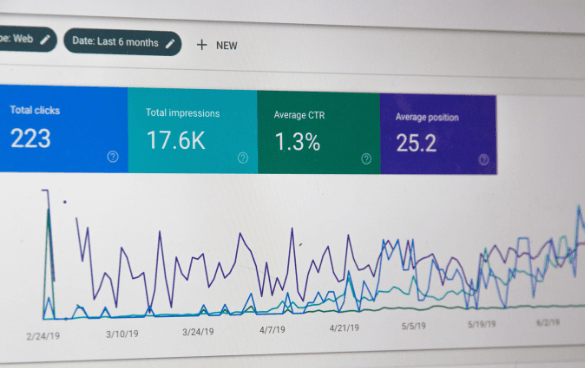Secret Features of Remarketing In Google Analytics Explained
Secret Features of Remarketing In Google Analytics Explained
Blog Article
Harnessing Remarketing in Google Analytics: A Comprehensive Overview
Taking advantage of remarketing in Google Analytics supplies organizations a calculated edge in reaching out to prospective consumers. This overview will shed light on the crucial actions involved in taking advantage of the complete potential of remarketing in Google Analytics, leading to enhanced advertising end results.
Understanding Remarketing in Google Analytics
Remarketing in Google Analytics permits businesses to strategically target individuals that have actually formerly engaged with their internet site or mobile application. By leveraging information from Google Analytics, companies can produce customized remarketing checklists based upon user actions, such as web pages gone to, activities taken, or particular objectives attained. This powerful device allows services to re-engage with customers who have revealed rate of interest in their services or products, inevitably increasing the chance of conversion.
Recognizing the various kinds of remarketing approaches is crucial for an effective campaign - What Is “Remarketing” In Google Analytics?. Google Analytics provides various alternatives, including typical remarketing, dynamic remarketing, and remarketing lists for search advertisements (RLSA) Each kind serves a special function and can be customized to meet certain advertising objectives
Moreover, examining the performance of remarketing campaigns is vital for optimizing results. Google Analytics gives important insights right into the efficiency of different remarketing strategies, enabling services to make data-driven choices and fine-tune their targeting method. By continually changing and checking remarketing initiatives based upon analytics information, services can optimize ROI and drive success in their advertising initiatives.
Establishing Remarketing Campaigns

After establishing target market lists, the next action is to link Google Analytics with Google Advertisements. By connecting these 2 platforms, services can effortlessly transfer target market listings from Google Analytics to Google Advertisements for remarketing functions. This combination permits more specific targeting and far better campaign performance.
As soon as the accounts are connected, organizations can produce remarketing campaigns in Google Ads utilizing the target market details previously specified in Google Analytics. These campaigns can be personalized with specific advertisement creatives, messaging, and bidding methods to successfully re-engage with past site visitors and drive conversions. By adhering to these steps, companies can leverage the power of remarketing to boost their marketing initiatives and enhance ROI.
Utilizing Audience Division Methods

Predefined segments in Google Analytics allow you to swiftly examine usual target market groups fresh users, returning individuals, or individuals that finished a particular goal on your website. Personalized sections, on the other hand, allow you to produce special sections based upon certain standards that are essential to your service goals. Dynamic remarketing checklists immediately readjust based upon individual behavior, revealing individualized ads to customers who have connected with your site particularly means.
Studying Remarketing Efficiency Metrics
Upon reviewing the efficiency of remarketing campaigns in Google Analytics, the analysis of essential efficiency metrics provides useful insights into target market interaction and conversion prices. By delving right into metrics such as click-through rates (CTR), conversion prices, cost per procurement (CERTIFIED PUBLIC ACCOUNTANT), and return on ad spend (ROAS), marketing experts can gauge the success of their remarketing initiatives. Evaluating these metrics enables marketing professionals to optimize projects, fine-tune target market targeting, and allot budget plans effectively to enhance general remarketing efficiency.
Maximizing Remarketing Techniques
When refining remarketing techniques in Google Analytics, concentrating on target market segmentation is vital for achieving campaign success. By dividing your audience right into details sectors based on their actions, demographics, or interests, you can tailor your ads Web Site a lot more successfully to every group. This targeted approach enhances the probability of involving users that have actually already shown interest in your items or solutions, causing greater conversion prices.
An additional important facet of optimizing remarketing approaches is continually testing and refining your projects (What Is “Remarketing” In Google Analytics?). A/B screening different advertisement creatives, messaging, or offers can assist you identify what resonates finest with your audience and check my blog drives one of the most conversions. By examining the performance of these tests in Google Analytics, you can make data-driven choices to maximize your remarketing efforts better
Moreover, leveraging vibrant remarketing can significantly boost your project results. This function enables you to show tailored ads to customers based on their previous interactions with your site, showcasing services or items they have actually previously viewed. By supplying customized content to individuals based upon their rate of interests and habits, dynamic remarketing can assist increase involvement and drive conversions.
Verdict
In verdict, utilizing remarketing in Google Analytics is a strategic approach to target customers who have actually formerly involved with a website. By creating customized audience lists and using target market segmentation approaches, businesses can optimize remarketing campaigns for enhanced conversion prices. Analyzing performance metrics and continually optimizing approaches are critical for maximizing the effectiveness of remarketing initiatives.
Google Analytics uses different choices, consisting of basic remarketing, dynamic remarketing, and remarketing lists for search advertisements (RLSA)After setting up audience lists, the following step is to connect Google Analytics with Google Advertisements. By linking these two platforms, companies can perfectly move audience checklists from Google view Analytics to Google Advertisements for remarketing functions.As soon as the accounts are linked, services can create remarketing projects in Google Ads making use of the target market provides previously specified in Google Analytics.When refining remarketing strategies in Google Analytics, focusing on audience division is paramount for accomplishing project success.
Report this page